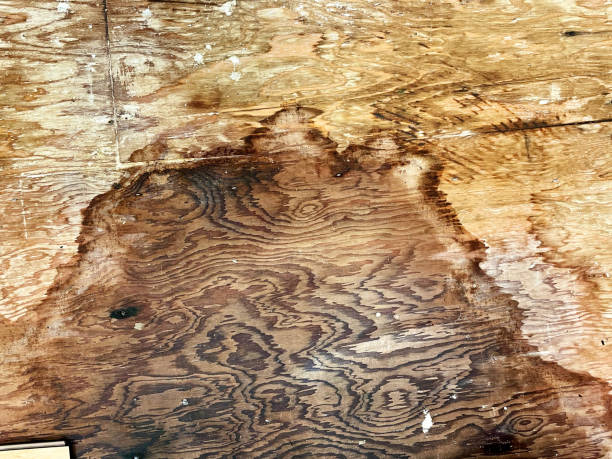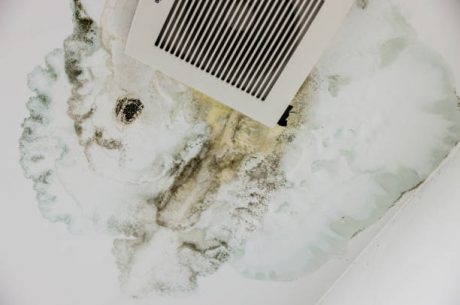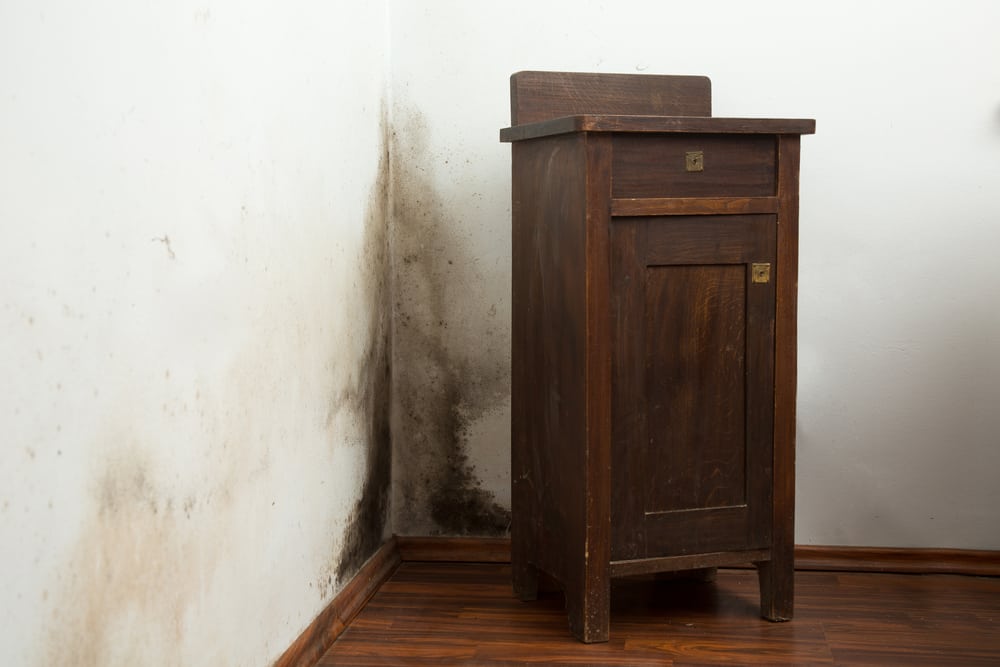Table of Contents
The truth is, mold removal for plywood floors becomes necessary more often than homeowners realize, especially in coastal climates like ours. Plywood’s porous wood fibers and adhesive layers create perfect conditions for mold growth when moisture is present – and in Florida’s humid environment, that moisture seems to find every vulnerable surface.
Understanding effective mold removal for plywood floors isn’t just about property maintenance – it’s about protecting everything you’ve worked to build.
Understanding Why Mold Removal Is Critical
Plywood subfloors present unique challenges that make professional mold removal for plywood floors different from treating other surfaces in your home.
The Plywood Problem Unlike solid hardwood, plywood consists of multiple thin wood layers bonded with adhesives. When moisture penetrates these layers, it creates trapped pockets where mold can flourish undetected for months.
Hidden Growth Patterns Mold growth often begins between plywood layers or on the underside of subflooring where it’s invisible until damage becomes severe. By the time surface mold appears, the contamination has usually spread throughout the entire sheet.
Structural Consequences Unchecked mold growth weakens plywood’s structural integrity, causing delamination, warping, and eventual failure that can compromise your home’s flooring system.
The Centers for Disease Control and Prevention (CDC) emphasizes that mold growth in building materials like plywood can trigger serious health problems, making prompt mold removal for plywood floors essential for family safety.
Step 1: Safety Assessment Before Mold Removal
Before beginning any mold removal for plywood floors project, establishing safety protocols protects both your health and your property.
Personal Protection Requirements Professional mold removal for plywood floors requires N95 or higher respiratory protection, eye protection, disposable coveralls, and nitrile gloves. Standard dust masks provide insufficient protection against mold spores.
Area Containment Mold spores become airborne during removal activities, potentially contaminating clean areas of your home. Plastic sheeting and negative air pressure systems contain contamination during mold removal for plywood floors.
HVAC System Protection Turn off heating and cooling systems before starting mold removal for plywood floors to prevent spore circulation throughout your home’s ductwork.
Moisture Source Elimination Successful mold removal for plywood floors requires addressing the underlying moisture problem. Remove standing water, fix leaks, and reduce humidity levels before beginning remediation work.
Step 2: Assessment and Documentation for Mold Removal
Thorough assessment determines the scope of contamination and guides your mold removal for plywood floors strategy.
Visual Inspection Techniques Remove flooring materials to expose the entire plywood surface. Look for discoloration, staining, fuzzy growth, and signs of delamination that indicate mold penetration into plywood layers.
Moisture Detection Use moisture meters to identify wet areas that may harbor hidden mold growth. High moisture readings often indicate contamination extends beyond visible mold growth areas.
Air Quality Testing Professional air sampling establishes baseline contamination levels and verifies successful completion of mold removal for plywood floors projects.
Photographic Documentation Document all contaminated areas before beginning work. This documentation supports insurance claims and provides before/after comparisons for project verification.
Step 3: Professional Techniques for Mold Removal
Effective mold removal for plywood floors requires specialized techniques that address contamination within the wood’s layered structure.
Surface Treatment Methods Begin with HEPA vacuuming to remove loose spores and debris. Apply antimicrobial solutions specifically designed for wood surfaces, ensuring penetration into plywood layers.
Sanding and Refinishing Considerations Light surface mold may respond to careful sanding with proper dust collection. However, sanding releases massive quantities of mold spores and should only be performed with professional containment systems.
Heat Treatment Options Professional heat treatment can eliminate mold within plywood layers without chemical application. This method requires specialized equipment and expertise to prevent fire hazards.
Replacement Decision Criteria When mold penetrates throughout plywood thickness or causes structural damage, complete replacement becomes more cost-effective than attempting mold removal for plywood floors remediation.
Understanding When Plywood Floors Require Replacement
Not all contaminated plywood can be successfully cleaned, making replacement decisions critical for project success.
Delamination Indicators When plywood layers separate due to mold damage, the structural integrity is compromised beyond repair. These areas require complete replacement regardless of mold removal for plywood floors efforts.
Penetration Depth Assessment Surface mold may respond to treatment, but contamination extending through multiple plywood layers typically requires replacement for complete mold removal for plywood floors.
Cost-Benefit Analysis Compare mold removal for plywood floors treatment costs against replacement expenses. Factor in labor, materials, and potential re-contamination risks when making decisions.
Insurance Considerations Some insurance policies favor replacement over remediation for contaminated building materials. Consult your adjuster before proceeding with extensive mold removal for plywood floors treatment.
Step 4: Moisture Control During Mold Removal
Controlling moisture during and after treatment prevents mold regrowth and ensures lasting results.
Dehumidification Requirements Maintain relative humidity below 60% during mold removal for plywood floors projects. Industrial dehumidifiers may be necessary in coastal climates where ambient humidity exceeds safe levels.
Air Movement Strategies High-velocity air movers accelerate drying and prevent moisture accumulation during treatment. Proper air circulation is essential for successful mold removal for plywood floors projects.
Structural Drying Timeline Plywood requires 72-96 hours of controlled drying after moisture intrusion. Rush drying can cause warping and cracking that creates new mold growth opportunities.
Monitoring and Verification Continue moisture monitoring for several weeks after completing mold removal for plywood floors to ensure conditions remain stable and prevent regrowth.
Step 5: Post-Treatment Verification and Prevention
Successful mold removal for plywood floors requires verification testing and long-term prevention strategies.
Air Quality Verification Professional air sampling after project completion confirms that mold removal for plywood floors efforts successfully eliminated airborne contamination.
Visual Inspection Protocols Systematic visual inspection ensures no contaminated areas were missed during mold removal for plywood floors treatment.
Preventive Treatments Apply mold-resistant primers and sealers to treated plywood surfaces. These protective coatings help prevent future mold growth even if minor moisture intrusion occurs.
Long-Term Monitoring Establish regular inspection schedules to detect early signs of moisture problems before they require extensive mold removal for plywood floors intervention.
The Santa Rosa Beach Climate Challenge
Coastal Florida’s unique environmental conditions create specific challenges for mold removal for plywood floors projects.
Year-Round Humidity Santa Rosa Beach’s 80%+ humidity levels mean that even minor water intrusion can trigger rapid mold growth requiring professional mold removal for plywood floors services.
Storm Season Impacts Hurricane season brings flooding risks that can contaminate large areas of subflooring simultaneously, requiring extensive mold removal for plywood floors expertise.
Salt Air Considerations Coastal salt air accelerates material deterioration and can complicate mold removal for plywood floors by affecting treatment chemical effectiveness.
Seasonal Moisture Variations Understanding seasonal moisture patterns helps time mold removal for plywood floors projects during optimal weather conditions for faster, more effective results.
Professional vs. DIY Mold Removal for Plywood Floors
Understanding when professional intervention is necessary protects both your health and your investment.
Safety Equipment Requirements Professional mold removal for plywood floors requires expensive safety equipment, containment systems, and disposal procedures that exceed most homeowner capabilities.
Technical Expertise Needs Assessing structural damage, determining treatment feasibility, and coordinating insurance claims requires experience that comes from handling hundreds of mold removal for plywood floors projects.
Liability Considerations Improper mold removal for plywood floors can spread contamination, cause structural damage, or create health hazards that result in significant legal and financial consequences.
Time and Cost Factors Professional teams complete mold removal for plywood floors projects faster and more thoroughly than DIY attempts, often saving money through efficient resource use and preventing re-contamination.
Long-Term Health Implications
Understanding health risks motivates prompt action when mold removal for plywood floors becomes necessary.
Respiratory Health Concerns Prolonged exposure to mold growth in plywood can trigger asthma, allergic reactions, and respiratory infections, particularly in children and elderly family members.
Indoor Air Quality Impact Contaminated plywood continuously releases spores into your home’s air, creating ongoing health risks until proper mold removal for plywood floors is completed.
Hidden Exposure Risks Mold growth within plywood layers may not produce visible symptoms while still creating significant air quality problems requiring professional mold removal for plywood floors intervention.

Frequently Asked Questions
Q: How quickly does mold grow in plywood subfloors?
A: Mold can begin growing in plywood within 24-48 hours of moisture exposure. In Santa Rosa Beach’s humid climate, visible growth often appears within a week, making prompt mold removal for plywood floors essential.
Q: Can I use household bleach for mold removal for plywood floors?
A: Bleach is ineffective on porous materials like plywood and can actually worsen the problem by adding moisture. Professional antimicrobial treatments designed for wood are necessary for effective mold removal for plywood floors.
Q: How do I know if mold removal for plywood floors was successful?
A: Professional air quality testing before and after treatment verifies successful mold removal for plywood floors. Visual inspection should show no remaining growth or staining.
Q: What causes mold growth in plywood subfloors?
A: Leaking pipes, roof damage, flooding, high humidity, and poor ventilation create conditions for mold growth requiring mold removal for plywood floors intervention.
Q: Is it safe to live in a home during mold removal for plywood floors?
A: Professional containment procedures typically allow safe occupancy during mold removal for plywood floors, though sensitive individuals may prefer temporary relocation.
Q: How much does professional mold removal for plywood floors cost?
A: Costs vary based on contamination extent, but professional mold removal for plywood floors typically ranges from $15-$25 per square foot for treatment or $25-$35 for replacement.
Q: Will homeowner’s insurance cover mold removal for plywood floors?
A: Coverage depends on the moisture source and policy specifics. Sudden water damage often triggers coverage, while long-term leaks may be excluded.
Trust PuroClean of Santa Rosa Beach for Expert Mold Remediation
When mold contamination threatens your plywood subfloors, you need more than good intentions – you need proven expertise and professional-grade equipment. At PuroClean of Santa Rosa Beach, we understand that discovering mold in your home’s structure creates both immediate health concerns and long-term property protection challenges.
Our certified mold remediation specialists have restored hundreds of Santa Rosa Beach homes affected by mold contamination in plywood subfloors, wall cavities, and other structural elements. We combine advanced technology with compassionate service to protect both your property and your family’s health.
Our Comprehensive Mold Remediation Services Include:
- 24/7 emergency response for water damage and mold discovery
- Professional mold assessment and air quality testing
- Safe containment and removal procedures
- Structural drying and moisture control
- Complete reconstruction when replacement is necessary
- Insurance coordination and claims documentation
- Follow-up testing to verify successful remediation
Why Santa Rosa Beach Families Choose PuroClean:
- IICRC-certified mold remediation technicians
- Advanced equipment including thermal imaging and industrial dehumidifiers
- Extensive experience with coastal Florida’s unique mold challenges
- Transparent communication throughout the restoration process
- Direct insurance billing and claims advocacy
- Local expertise serving the Emerald Coast community
We understand that discovering mold in your home’s structure is stressful and overwhelming. Our team provides not just technical expertise, but also the guidance and support you need to make informed decisions about your family’s safety and your property’s protection.
Don’t let mold contamination compromise your home’s structural integrity or your family’s health. When professional mold remediation becomes necessary, trust the certified experts who combine technical excellence with genuine care for our community.
Call PuroClean of Santa Rosa Beach at (850) 399-3380 for immediate mold remediation assistance.
Available 24/7/365 | Contact Us Online | Available 24/7 | Google Business Profile | IICRC Certified | Insurance Preferred | Complete Mold Remediation Solutions



